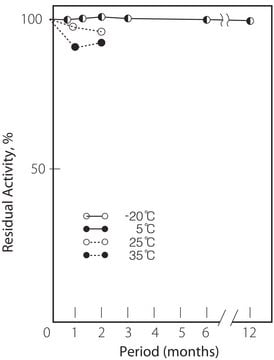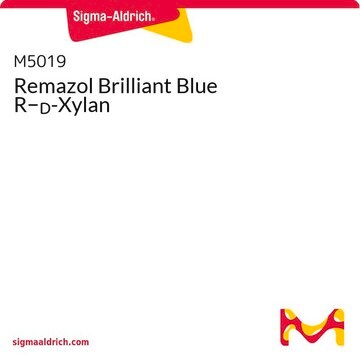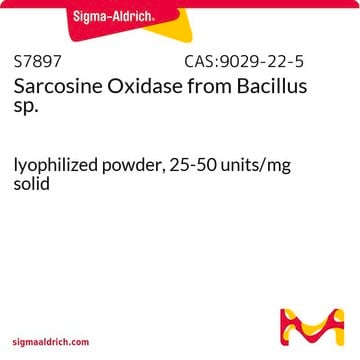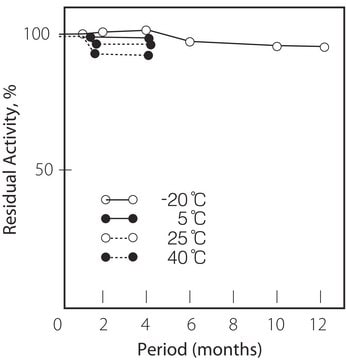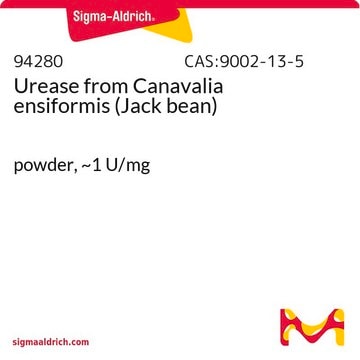C9409
Creatinine Deiminase microbial
lyophilized powder, ≥25 units/mg protein
Sinónimos:
Creatinine Deaminase
Seleccione un Tamaño
US$ 1.290,00
Disponible para envío el07 de abril de 2025Detalles
Seleccione un Tamaño
About This Item
US$ 1.290,00
Disponible para envío el07 de abril de 2025Detalles
Productos recomendados
Formulario
lyophilized powder
actividad específica
≥25 units/mg protein
mol peso
~260 kDa
composición
Protein, ≥15% biuret
temp. de almacenamiento
−20°C
Aplicación
- to immobilize aminosilylated glass beads based biosensor for ammonia/ammonium and creatinine detection in urine[1]
- in creating creatinine-sensing membrane for biophysical studies[2]
- to investigate the bioelectronic tongue for the simultaneous determination of urea, creatinine and alkaline ions in clinical samples[3]
Acciones bioquímicas o fisiológicas
Propiedades físicas
Michaelis constant : 3.5 x 10‾3M (Creatinine)
Structure : 6 subunits per mol of enzyme
Inhibitors : Ag+,Hg++, o-phenanthroline,monoiodoacetate
Optimum pH : 8.5 – 9.5
Optimum temperature : 65 – 75°C
pH Stability : pH 7.0 – 11.0 (30°C, 20hr)
Thermal stability : Below 65°C (pH 7.5, 1hr)
Definición de unidad
Forma física
Código de clase de almacenamiento
11 - Combustible Solids
Clase de riesgo para el agua (WGK)
WGK 3
Punto de inflamabilidad (°F)
Not applicable
Punto de inflamabilidad (°C)
Not applicable
Equipo de protección personal
Eyeshields, Gloves, type N95 (US)
Elija entre una de las versiones más recientes:
¿Ya tiene este producto?
Encuentre la documentación para los productos que ha comprado recientemente en la Biblioteca de documentos.
Active Filters
Nuestro equipo de científicos tiene experiencia en todas las áreas de investigación: Ciencias de la vida, Ciencia de los materiales, Síntesis química, Cromatografía, Analítica y muchas otras.
Póngase en contacto con el Servicio técnico